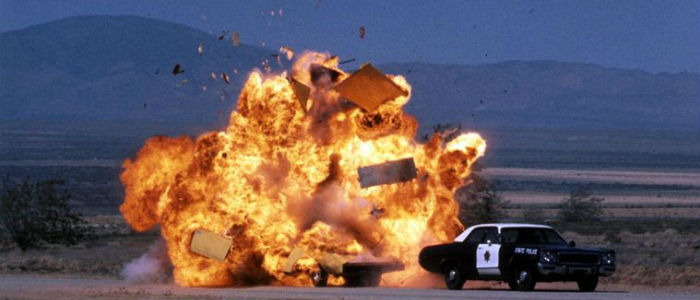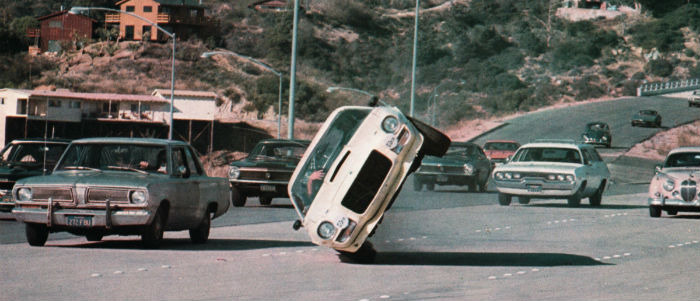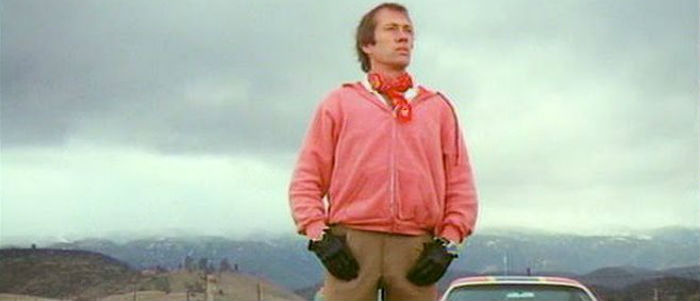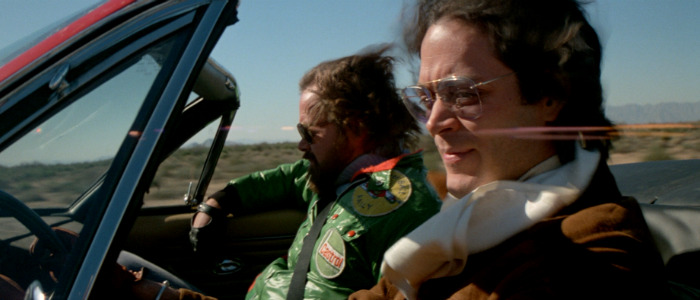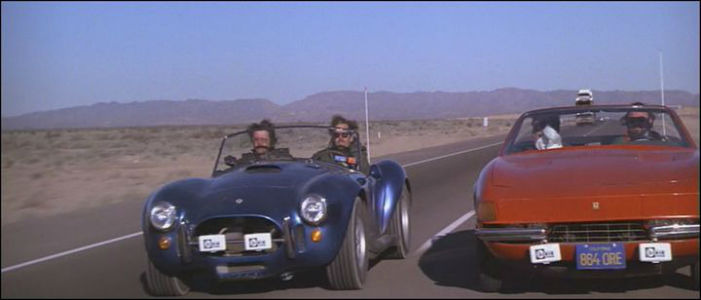Seeing Double: 'Cannonball' And 'The Gumball Rally' Go Head-To-Head Across America
(Welcome to Seeing Double, a series where two strangely similar films released around the same time are put head-to-head. This time, we rev our engines and hit the asphalt with movies about high-speed, fun-filled car races across America.)
If someone mentions having seen a movie about a wild and highly illegal cross-country car race you'd most likely think they were referring to 1981's The Cannonball Run. It's understandable as the Hal Needham-directed hit is popular, filled with A and B-list celebrities, and even received a sequel, but it's neither the first nor the best to tackle this very real race in the form of a comedic action flick. (And no, they're definitely not referring to 1989's Speed Zone. No one ever refers to that movie.)
Two movies were released in 1976 and opened a mere three weeks apart, and both put an eclectic group of characters behind the wheel for a coast to coast race where only the fastest can be crowned the winner. Big stunts, eccentric characters, and a massive disrespect for the law are the order of the day in both films, but which movie wins the race? Ready, set...go!
The Story
The movies that make up this column are typically similar-sounding stories sharing narrative threads and released within a few months of each other, but this week's films are actually based on the same exact true "story" — the Cannonball Baker Sea-to-Shing-Sea Memorial Trophy Dash. The race ran five times throughout the 1970s — notably with only a single accident –and founder Brock Yates eventually began work on a screenplay about the experience. He was beaten to the punch by these two movies, but he had the last laugh when his script was eventually produced and became the biggest hit of the bunch. One of these two early birds is the better movie though.
Coy 'Cannonball' Buckman is on parole after serving time for a death that occurred while he was driving drunk, but he can't say no to a cross-country race offering a prize of $100k. He's favored to win, but the villainous Cade Redman is prepared to beat him to the finish line at any cost. The promise of violence is high, and the presence of Coy's parole officer — who's also his girlfriend — complicates things a bit further as she finds herself accidentally in the crosshairs. Epic explosions, deadly snipers, and one hell of a multi-car collision are in their immediate future.
"Gumball." A single word from businessman Michael Bannon sets off an annual event pitting eight teams against each other in a race from New York City to Long Beach, CA. The prize? A gumball machine and the quiet bragging rights that come with winning a race you can't really talk about. One car doesn't even make it out of the garage, but for the other seven, the next thirty-five hours will be filled with excessive speeds, friendly deceptions, and a fair amount of property destruction.
Winner: While New World Pictures' Cannonball — alternately known as the far cooler Carquake — gives the story the expected genre bump, doing so also serves to make the story somewhat generic. It's set in the real world as opposed to some apocalyptic hellscape, but the good guy vs bad guy routine still feels fairly routine. Worse, the attempt to balance the comedic with the serious rarely works (outside of scenes starring Dick Miller obviously). The Gumball Rally, by contrast, sets up a friendly race and just has fun with it, and while that seems simple enough it's a rare thing indeed. These aren't life or death stakes. It's just a race between competitive friends and friendly competitors, and it's so darn refreshing. So The Gumball Rally wins this round.
The Filmmakers
Roger Corman produced Cannonball, and his fingerprints are all over it for both better and worse. It's cheap, the cast is filled with Corman favorites, and the focus is on junker cars meeting their demise. The driving force behind it, though, is director/co-writer Paul Bartel (Eating Raoul, 1982) who made the film fresh on the heels of the better known Death Race 2000 (1975). Corman reportedly told him that film would have been better received had it been more realistic and "harder," so Bartel complied with Cannonball only to find the same theatrical fate. Curiously, the film's other co-writer is legendary producer Don Simpson (Top Gun, 1986). It's the man's only official writing credit, and no, I don't understand why either. Also well worth mentioning? Cinematography is by Tak Fujimoto (The Silence of the Lambs, 1991).
The Gumball Rally lacks even a hint of that degree of recognizable talent as it instead comes courtesy of director Chuck Bail. The stuntman turned filmmaker had only made two films before this — Black Sampson (1974) and Cleopatra Jones and the Casino of Gold (1975) — and neither gave him much of a cachet. He was Second A.D. a few years later on The Beastmaster (1982), though, and that's no small potatoes. Writer Leon Capetanos was in a similar situation with a filmography at the time that included Secret Life of a Schoolgirl Wife (1971), but he went on to co-write some Paul Mazursky gems like Moscow on the Hudson (1984) and Down and Out in Beverly Hills (1986).Winner: No contest here as Cannonball looked like the surer bet at the time.
The Cast
As mentioned, Cannonball pulls together some Corman regulars starting with David Carradine in the lead role as a more human character than the one he played in Death Race 2000. His younger brother Robert is along for the ride too as a laid-back surfer type, and they're joined by Gerrit Graham, Mary Woronov, James Keach, Dick Miller, and Bartel himself. It's loaded with cameos too from the likes of Joe Dante, Martin Scorsese, Sylvester Stallone, and more.
The Gumball Rally is a bit less flashy on this front, but they went for talented comedic actors who deliver the goods. Michael Sarrazin takes the lead, and he's joined by Gary Busey, Tim McIntire, and a terrific Raul Julia.Winner: They're all actors worth watching, but as far as names on a poster go, Cannonball's roster of fun and familiar talents grabs the attention faster and more efficiently.
Critical Reception
As with the box-office receptions below, neither film really set the moviegoing public ablaze, and the critics were no more excited about them. Cannonball doesn't even have a Rotten Tomato score while its Audience approval sits at 34%. Roger Ebert gave it a paltry single star and called it "an exercise in highway sadism." The Gumball Rally does have an RT score, but at a measly 30% it's unclear if that's actually better than no score at all. Audiences are more receptive with an approval of 65%, and Ebert agrees giving it two and a half stars saying it's "pleasant, slick, inoffensive entertainment."
Winner: Numbers don't lie, so this category goes to The Gumball Rally.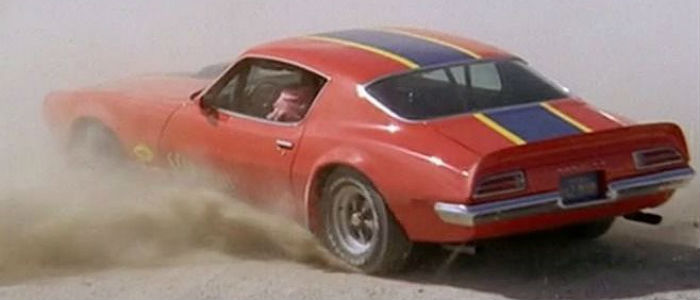
Budget and Box-Office
Budget information for the two films is difficult to come by, but I'd be surprised if either cost more than $1 million. Hell, they probably cost a million combined. Whatever the price tags were there's no denying that The Gumball Rally looks to take the best advantage of the money spent. It just looks better crafted and sharper all around, although the spectacle of a highway pileup in Cannonball that keeps going for several minutes is something to behold. Their respective box-office results followed in line with Cannonball earning a mere $1.5 million while its competitor brought in $5.8 million.
Winner: Both movies are still earning some money via streaming and home video too, but only The Gumball Rally is available on Blu-ray (from Warner Archive).
My Take
The Gumball Rally is not only the better film between these two, but it's also the best of the "cross country race" sub-genre. Is it lightweight and fairly forgettable? Maybe, but it's also easy entertainment that leaves a smile on your face. Not every movie needs to have real thematic weight or dramatic conflict, and this little gem doesn't even pretend otherwise. Some of the humor is dated — light sexism and racial stereotypes rear their head, but they're far from malicious — but most of the comedy comes from good-natured antics and fun stunts. The action is pretty fantastic too with some very elaborate and precise beats involving cars colliding or just missing each other. One ongoing gag involving a Rolls Royce sees it repeatedly engage in some manner of chase or action sequence where everything around it is destroyed while it remains untouched. It's a good time, and it's the kind of film where you'd be happy with any of the characters ultimately winning as that's the least important part of this race.

